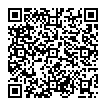NEWS RELEASE
Copenhagen, 27 November 2003
Europe's water quality generally improving but
agriculture still the main challenge
The protection and quality of Europe's water is generally improving
but there is little or no progress in combating some types of pollution
or overuse of water in certain regions, both issues that are linked
particularly to agriculture.
This makes it important to monitor the effects of next year's
enlargement of the European Union on agriculture and water resources in
the new Member States. Economic restructuring in central and eastern
Europe during the 1990s generally led to reduced pressures on the
aquatic environment, but any widespread intensification of agriculture
after EU enlargement is likely to reverse this trend.
The European Environment Agency today publishes a short briefing
paper, Status of Europe's water, summarising the overall picture and
highlighting the issues on which progress is and is not being made. The
briefing is based on the EEA report Europe's water: an indicator-based
assessment, published last month.
Nearly 30 years of European Union environmental legislation,
together with national and international action, to protect and improve
the aquatic environment are bearing fruit in many areas, although large
gaps in data on some issues mean that related conclusions must be
treated with caution.
Where overall progress is being achieved on an issue there can still
be specific problems and geographical 'hot spots,' however.
The areas of progress include generally improving river quality in
14 countries for which information is available. Pollution of rivers
and lakes by phosphorus and organic matter from industry and households
has seen a notable reduction, and discharges of these substances into
the seas have also fallen.
River pollution by heavy metals and other hazardous substances is
generally decreasing and there is evidence that this is also lowering
concentrations in Europe's seas. The total amount of oil spilt from
vessels dropped during the 1990s.
There has also been progress in reducing overall water withdrawals
('abstraction') and use, except in the western part of southern
Europe.
Furthermore, significant improvements in information about Europe's
water have been achieved through the implementation of Eurowaternet, a
water data and information gathering network coordinated by the
EEA.
By contrast, no overall progress is being made on reducing nitrate
and pesticide pollution or water withdrawals for irrigation, energy use
and tourism.
Nitrate pollution, particularly from fertilisers used in
agriculture, has remained constant and high. Nitrate concentrations in
rivers remain highest in those western European countries where
agriculture is most intensive. There is no evidence of changes of
nitrate concentrations in groundwater, and nitrate in drinking water
remains a common problem across Europe.
Pesticides from agriculture continue to be present at concentrations
that are cause for concern in raw water used for drinking water
production, but lack of data makes it impossible to establish
trends.
Regarding water withdrawals, there has been a slightly increasing
trend in agricultural water use, such as for irrigation, in western
southern Europe. The same trend can be seen in water for energy
production in the countries of central and eastern Europe that will
join the EU next May.
Tourism is placing a significant and most probably growing burden on
water resources in many parts of southern Europe. Excessive water
withdrawal remains a major concern in areas such as the coast and
islands of the Mediterranean where drinking water sources have
consequently become contaminated with seawater.
The briefing paper is the first in an occasional series. It is
published on the EEA website. The full report is available at http://reports.eea.europa.eu/topic_report_2003_1
and the summary at http://reports.eea.europa.eu/report_2003_0617_150910/en/tab_abstract_RLR.
Notes for Editors
The countries that will join the EU next May, known as the acceding
countries, are Cyprus, the Czech Republic, Estonia, Hungary, Latvia,
Lithuania, Malta, Poland, the Slovak Republic and Slovenia. Bulgaria
and Romania are negotiating to join at a later date, while Turkey has
applied for EU membership but has not yet started negotiations.
About the EEA
The European Environment Agency is the main source of information
used by the European Union and its Member States in developing
environment policies. The Agency aims to support sustainable
development and to help achieve significant and measurable improvement
in Europe's environment through the provision of timely, targeted,
relevant and reliable information to policy-making agents and the
public. Established by the EU in 1990 and operational in Copenhagen
since 1994, the EEA is the hub of the European environment information
and observation network (Eionet), a network of around 300 bodies across
Europe through which it both collects and disseminates
environment-related data and information.
The Agency, which is open to all nations that share its objectives,
currently has 31 member countries. These are the 15 EU Member States;
Iceland, Norway and Liechtenstein, which are members of the European
Economic Area; and the 13 EU acceding and candidate countries, namely
Bulgaria, Cyprus, the Czech Republic, Estonia, Hungary, Latvia,
Lithuania, Malta, Poland, Romania, Slovenia, the Slovak Republic and
Turkey. The EEA is the first EU body to take in the acceding and
candidate countries. Negotiations on EEA membership are also under way
with Switzerland.

Document Actions
Share with others